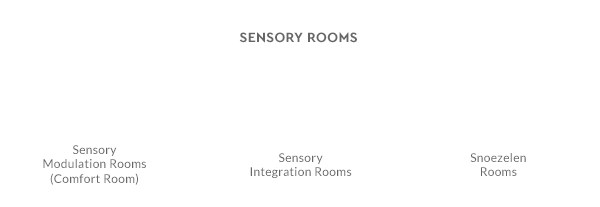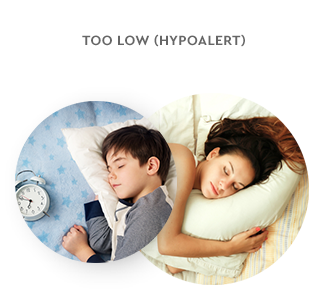Comfort Rooms
What is a Comfort Room?
- A Comfort Room is a type of Sensory Room that is Trauma Informed
- It is designed to help people experience an optimal state of regulation by engaging their senses
- Caregivers can use it as a preventative strategy to help people explore regulating activities to enhance other coping strategies or approaches
- People who may have experienced trauma can find this room helpful when learning about feelings and physical responses associated with their past
Three Types of Sensory Rooms
“The theoretical basis for sensory rooms has emerged from the trauma informed care, sensory modulation, self management and recovery literature. This is further supported by evidence for self soothing techniques from dialectical behavioral therapy in the management of distress from consumers with borderline personality disorder, eating disorders and addictions.” (Novak et al., 2014)

(Champagne, T. (2011) http://www.ot-innovations.com/)
Research Supported Benefits of Comfort Rooms
- Sensory Based Interventions combined with Cognitive Behavioural Therapies were more likely to reduce mental health symptomology than cognitive therapies alone (Steele & Kuban, 2010)
- Reduced perceived distress levels (Champagne & Sayer, 2003)
- Reduced use of restraints (Warner et al 2013; Champagne & Sayer , 2003)
How Does It Work?
“Creating meaningful, safe and sensory spaces can influence the nervous system in the mind-body-spirit of clients when they are experiencing crisis or discomfort. Allowing clients to seek out, arrange and modify their own safe, sensory place in their own time, daily routine and natural environment is most consistent with this practice.” (Loukas, K., 2011)
On a daily basis we all have varying sensory needs and unconsciously find sensory responses to remedy challenges to our systems. These sensory needs and responses can be thought of in the context of an arousal continuum.
 |
 |
 |
Most of us find ways to regulate ourselves and get back to the “Just Right” stage. Some examples are:
 |
However, if we have experienced trauma, our responses may not always help us become regulated. It is in these instances that a safe, trauma informed space like a Comfort Room can help people explore sensory strategies with support from safe and trusted caregivers. Below are some strategies which people have reported as being helpful depending on where they are on the arousal continuum.
Too Low (Hypoalert)
ALERTING |
Too Heightened (Hyperalert)
CALMING |
|---|---|
|
|
Champagne, T. & Sayer, E. (2003). The effects of the use of the sensory room in psychiatry.: A quality improvement study. Retrieved from http://www.ot-innovations.com/restraint-reduction/seclusion-and-restraint-reduction-initiative/
Champagne, T. & Stromberg, N. (2004). Sensory approaches in inpatient psychiatric settings: Innovative alternatives to seclusion & restraint. Journal of Psychosocial Nursing, 42(9) 35-44
Champagne, T. (2011) http://www.ot-innovations.com/
Loukas, K. (2011, June) Occupational placemaking: Facilitating Self-Organization through the use of a sensory room. Mental Health Special Interest Section Quarterly, 1-4
MacDaniel, M. (2009) Comfort Rooms: A preventative tool used to reduce the use of restraint and seclusion in facilities that serve individuals with mental illness: Ideas and instructions for implementation. pp75-76. Novak et al. (2014). Pilot study of a sensory room in an acute inpatient psychiatric unit. Journal of Australian Psychiatry, 20 (5) 401-406
Shanker, S. (2013) Calm, alert and happy. Queens Printer for Ontario, 1-6
Steele, W. & Kuban, C. (2010). Structured sensory trauma interventions. Reclaiming Children and Youth, 18(4). 29-31
Warner et al. (2013). Can the body change the score? Application of sensory modulation principles in the treatment of traumatized adolescents in residential settings. Journal of Family Violence. 28, 729-738



